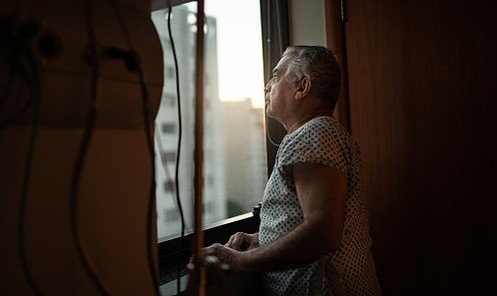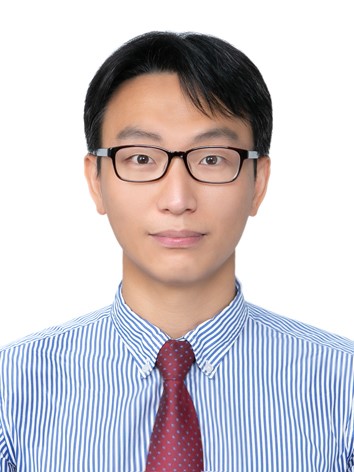In 2023, the declining birthrate took center stage in mainstream media, saturating the year with abundant reports on our society's rapid progression toward an ominous future. Various special documentaries delved into the intricate dynamics of birthrate and aging, featuring insights from experts across diverse fields who echoed a consistent narrative. These similar documentaries showcased instances from other nations that effectively boosted their birth rates, ultimately concluding with the stark realization that Korea is accelerating towards a predestined gloomy future.

The fundamental basis underpinning the discourse in these analyses revolves around the statistical observation that the population of individuals aged 65 and above is expanding, while those considered to be in the "productive age" bracket (15-64) are contracting. Implicit in these calculations is the widely accepted notion that beyond the age of 65, individuals cease active participation in society, experience health declines, and require care, presenting an unalterable reality for the future. However, in the past year, my efforts through a series of columns have aimed to challenge this assumption. I have sought to demonstrate that this premise is flawed, emphasizing that as life expectancy and median age rise in our society, the threshold at which individuals enter biological old age is gradually being delayed. Moreover, I have explored how the trajectory of aging, both physically and mentally, can be influenced by our perspectives and the design of our lives.
Does a country lose its vitality when more people are over 65? My answer is no. The aging of a country is the sum of the aging trajectories of all its members, and the aggregate functioning of individuals matters more than their numerical age. Determining this functional trajectory in the future involves, firstly, maintaining and enhancing an individual's overall physical, cognitive, emotional, and social functioning, described as “intrinsic capacity.” For example, consistent strength training ensures a body capable of mobility well into one's 80s. Secondly, it's crucial to offset deficits in intrinsic capacities with robust social systems. Even if muscle strength declines and an individual relies on a wheelchair, a well-designed public transportation system can mitigate isolation. Creating a virtuous cycle through a social system that fosters holistic functioning is essential. Difficulty in socializing leads to mood and cognition decline, impacting appetite and reinforcing reluctance to leave home, further diminishing muscle function. Conversely, an environment promoting movement, social interaction, and mental engagement, regardless of age-related changes, prevents the natural decline in intrinsic capacity, averting frailty and dementia.
Japan, a neighboring country, has remarkably succeeded in preserving the functioning of its society. According to an analysis by British economist Charles Goodhart, from 1988 to 2018, Japan exhibited the lowest economic growth rate among major economies when considering the total population. However, its average annual economic growth rate per working-age person (20-64) surpassed that of the U.S., the U.K., and France. This accomplishment underscores the sustained active participation of older adults in Japanese society. In fact, over the past two decades, Japan has actively pursued a societal model in which older adults can continue working. Simultaneously, it has established a community care prevention system to maintain the physical and cognitive functions of those aged 75 and older, integrating healthcare and welfare to proactively address and prevent care needs from arising.
Taking the Japanese concept to an even greater extent, Singapore has earned a place on the world's sixth list of "Blue Zones,” or areas with lower rates of chronic diseases and a longer life expectancy, thanks to its dedication to slowing down the aging process across the entire country. In contrast to traditional Blue Zones, which naturally evolve, Singapore has introduced the concept of Blue Zone 2.0, founded on policy initiatives. This approach encourages citizens to engage in city walks, adopt healthy eating habits, and imposes substantial taxes on car ownership, drinking, and smoking. The implementation of an age-friendly healthcare system, grounded in geriatric principles, enables hospitals to focus on preventing illness and frailty rather than merely treating them. Moreover, the establishment of community systems facilitates individuals to remain in their communities even as frailty sets in, ensuring support when their intrinsic capacities are on the decline.
Korean society doesn't fare well in terms of contemplating the aging process for individuals already born. Healthcare is characterized by fragmentation, with a focus on treatment and specialties. Many people are still unfamiliar with the concept of geriatric medicine. Hospitals pose risks for older individuals; although they may be treated of their illnesses, they often experience complications such as delirium, falls, and pressure ulcers, leading to discharges to nursing homes and convalescent hospitals. Following hospital discharge, receiving integrated care becomes challenging, leading to visits to various departments. Even if immediate mobility becomes impossible, one must exhibit a clear need for care (disability) over a sufficient period to qualify for benefits from long-term care insurance for older adults. Solely addressing illness often results in prolonged bed rest. Korean healthcare lacks the concept of proactive frailty prevention, and long-term care insurance lacks a notion of care prevention. The responsibility for functional recovery and rehabilitation of older adults essentially falls on the family, and the remaining intrinsic capacities are susceptible to erosion. Individuals with frailty are 10 times more likely to require long-term care insurance services in 10 years, while the proactive provision of geriatric healthcare services significantly reduces the chances of entering a nursing facility or facing mortality. Even when presented with this evidence, bureaucrats remain unwilling to budge.
Nevertheless, there are encouraging signs. Korea boasts the highest percentage of working older adults in the Organization for Economic Cooperation and Development (OECD). Despite old age poverty often being cited as a contributing factor, Statistics Korea’s 2023 data on older adults revealed that working older adults perceived themselves to be in good health and experienced less daily stress. Healthier individuals are more likely to remain in the workforce, and work can also provide physical, cognitive, and social stimulation, fostering a virtuous cycle of maintaining intrinsic capacity. Those newly turning 65 are not only healthier but also wealthier and better educated than previous generations. It becomes the role of policy to assist them in preserving their intrinsic capacities for the future. The true strength of a country will be demonstrated by how its people age. A bleak future is not an inevitability; our future is shaped by our actions.

Jung Hee-won, a geriatric physician at Asan Medical Center, graduated from Seoul National University College of Medicine and trained at Seoul National University Hospital. During his med-school days, while practicing the horn, he realized the importance of muscle maintenance and became interested in sarcopenia. His main research interests include frailty, sarcopenia and establishing age-friendly health systems for acute hospitals. This column was originally published in Chosun Ilbo in Korean on Jan. 3, 2024. -- Ed.
Related articles
- [Column] ‘Decline in strength during old age stems from indulgences in youth’
- [Column] Need ₩1 billion for retirement? It's fear marketing by banks and insurers
- [Column] The median age at which you’re treated as an adult is 45, not 30
- [Column] Walk 2 hours a day and eat healthy, but still anxious about health?
- [Column] Want to avoid dementia? Build cognitive reserve with lifelong learning
- AMC offers example of proactively dealing with ‘high-risk elderly patients’
- [Column] Seatless subway in Seoul is like a game of musical chairs
- [Column] Slow aging is getting trendy and enjoyable for Korean X users in their 20s-30s.
- [Column] What matters is patient-centric healthcare, not the 2,000-seat increase

